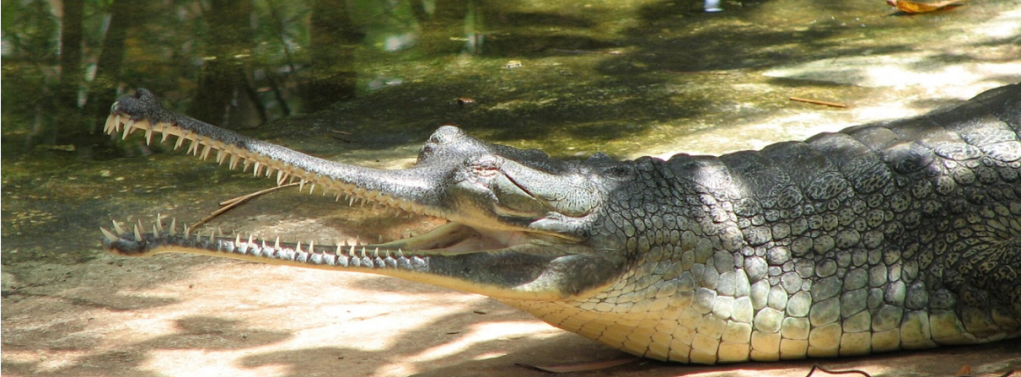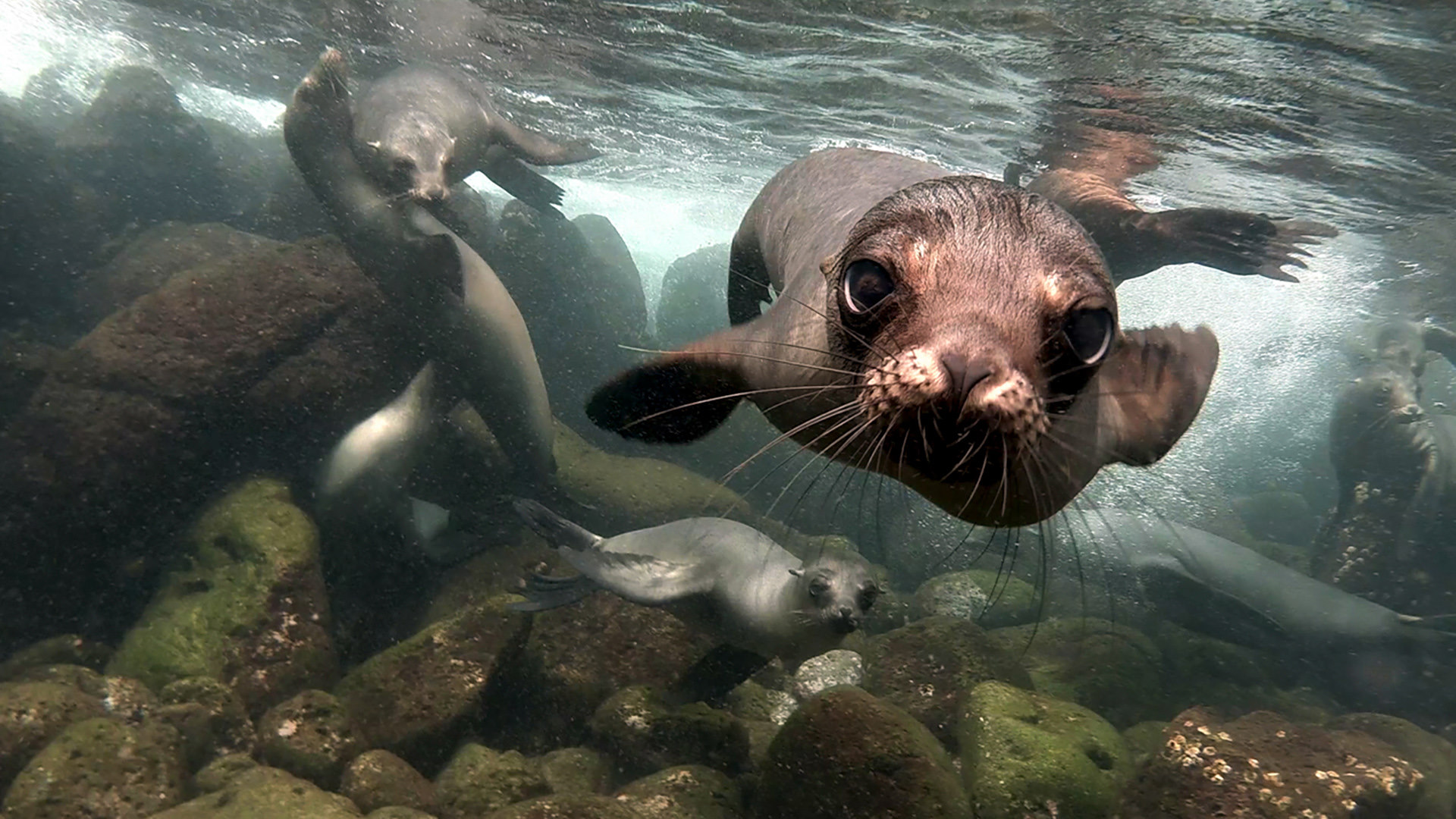- Nepal recently released 25 critically endangered gharials into a tributary of the Mahakali River to reintroduce them to historical habitats, but concerns have arisen over transparency and timing of the process.
- Gharials are released into the Chaudhar river, part of the Terai Arc Landscape, to augment dwindling populations, although previous translocations have yielded mixed results.
- Researchers highlight challenges faced by gharials, including migration obstacles due to dams and barrages, and they advocate for better timing of releases to optimize adaptation and survival.
- Issues such as lack of publicized government studies, potential influence of reciprocal gifts in translocation decisions and denial of budget-related motives are raised amid efforts to conserve gharials.

KATHMANDU — Nepal’s Department of National Parks and Wildlife Conservation (DNPWC) released 25 critically endangered gharials (Gavialis gangeticus) into a tributary of the transboundary Mahakali River (also known as Sarda in India) on March 17. This action, the department says, aligns with plans to gradually reintroduce the crocodiles to rivers where they historically had roamed but became extinct due to various reasons.
However, researchers and conservationists observing the release have raised concerns regarding the transparency and timing of the process.
A total of 22 females and three males raised at the gharial breeding center at Chitwan National Park were released into the Chaudhar River, which flows through the Shuklaphanta National Park part of the Terai Arc Landscape in far western Nepal. The last remaining gharial in the river was found dead in 1993.
“We welcome the translocation of the gharials into rivers where they historically roamed,” said crocodile researcher and conservationist Ashish Bashyal from the NGO Biodiversity Conservancy Nepal. “However, it could have been done in a better way,” he added.

Gharials, known for their slender snouts ending in a swollen tip, previously inhabited the Ganga River and its tributaries in South Asia. Presently, they are found in only a handful of rivers within the Ganga Basin, facing threats from dams and barrages, fishing, infrastructure projects and poaching. Around 800 individuals are believed to be remaining in Nepal and India.
“We released the gharials in the Chadhar River based on the findings of a study commissioned by the Department of National Parks and Wildlife Conservation,” Shyam Kumar Shah, information officer and senior ecologist at the department who also led the aforementioned study, told Mongabay.
Since 1978, Nepal has implemented a program to breed gharials in captivity and release them to bolster the wild population. Authorities in Chitwan and Bardiya national parks gather eggs from riverbanks, create a conducive hatching environment, nurture and feed the juveniles until they are released at approximately 5 years old. This initiative has been recognized for preventing the local extinction of the species in Nepal.
“Our concern is that research has shown that the post-monsoon period (October/November) is the best time to release captive-raised gharials into the river,” Bashyal said.
The monsoon clouds, originating from the Bay of Bengal in the Indian Ocean, encounter obstruction from the Himalayan mountain range when moving northward. This obstacle prompts the formation of a low-pressure band, releasing moisture as rain in the foothills of the mountains and the Gangetic plain spanning Nepal, India and Bangladesh. Termed the “monsoon trough,” this band traverses between the northern foothills and the southern Indian plains, bringing rainfall wherever it travels. Monsoon rains, which begin in June and end in September, contribute 60-90% of Nepal’s annual precipitation.

In a 2022 study led by veteran conservationist Bed Bahadur Khadka, it was discovered that the crocodiles, known for their excellent swimming skills, catch and eat the most fish during the pre-monsoon (April/May) and monsoon (July/August) seasons when fish are abundant. But during these periods, newly released gharials may not have the experience to make the most of it, leading them to burn up their energy hunting inefficiently and failing to put on weight ahead of leaner times.
This could result in a missed growth opportunity immediately following release, leaving gharials without ample reserves as they approach their first winter, the study suggests. Conversely, releasing gharials in the post-monsoon or early winter may facilitate quicker adaptation to the habitat and maximize growth potential as the warmer season approaches, according to the study. The Gharial Conservation Action Plan (2017-22) also states, “Generally gharials are released post monsoon after September. This allows them to get adapted to the natural conditions.”
Another gharial researcher and founder of the NGO Care for Nature, Ranjana Bhatta, raises the issue that government-commissioned studies for translocation efforts are seldom publicized. “The government relies on its internal studies to justify translocation, but these studies are not accessible to the public nor reviewed by independent experts,” she points out. “These studies should be made public so that people understand the reasons behind the local extinction of gharials and how these issues are being addressed,” she emphasizes.
Likewise, concerns have been raised about the timing of the translocation, prompting questions about whether it was hurried to exhaust allocated budgets. Nepal’s fiscal year concludes in July, coinciding with the peak of the monsoon, and it’s common for government offices to engage in rapid spending to meet annual targets. This situation could also apply to the translocation, considering that the opportunity for such endeavors diminishes once the monsoon rains commence.
Similarly, Nepal hasn’t had a stellar track record with gharial translocations. Last February, 10 gharials were transferred from the Gharial Breeding Center in Chitwan to the West Rapti River in Banke National Park, which historically belonged to the species’ natural habitat. Likewise, in 2022, 20 captive-raised gharials were released into the Koshi River. Between 1981 and 2017, a total of 1,246 gharials were released into various river systems across Nepal. However, significant gharial populations are only found in Chitwan and the Babai River in Bardiya.
Bhatta noted that the majority of gharials released in Nepal ultimately migrate to India and struggle to return upstream due to the construction of barrages and dams in major rivers. “Recently, I spoke with fishermen downstream of the Gandak Barrage,” she said. “They mentioned spotting gharials swimming near the barrage.” The situation worsens during the monsoon, as flooded rivers sweep gharials downstream, and they are unable to swim back up due to the absence of fish ladders or other structures to aid their movement.
Carrying out releases without addressing the issue doesn’t help meet the desired goal of creating viable populations in different areas, Bhatta told Mongabay.

Another concern raised is the practice of providing a reciprocal gift whenever a national park supplies animals for translocation to another park in Nepal. For instance, when water buffaloes (Babalus arnee) were relocated from Koshi Tappu, rhinos were offered in return. Currently, Chitwan is anticipating blackbucks (Antilope cervicapra) from Shuklaphanta for a new fenced facility aimed at attracting tourists. This explains the urgency to send gharials to Shuklaphanta, according to a government official who spoke anonymously to Mongabay, as he lacked authorization to engage with the media.
Senior ecologist Shah acknowledged that the current timing for releasing gharials wasn’t ideal. However, he maintained that logistical constraints left no other option for the release. “Our plan was to carry out the release in February on the occasion of World Wetlands Day. But we couldn’t do it due to lack of preparations,” he added. He mentioned that it’s not customary for the government to publicize internal reports. He also refuted any connection between the release and reciprocal gifts or budget considerations.
Banner image: A gharial, lying on the ground with mouth wide open. Image by Karunakar Rayker via Wikimedia Commons (CC BY 2.0)
Citations:
Khadka, B. B., Bashyal, A., & Griffith, P. (2022). Post-release growth of captive-reared Gharial Gavialis gangeticus (Gmelin, 1789) (Reptilia: Crocodilia: Gavialidae) in Chitwan National Park, Nepal. Journal of Threatened Taxa, 14(5), 21002-21009. doi:10.11609/jott.6692.14.5.21002-21009



You must be logged in to post a comment.